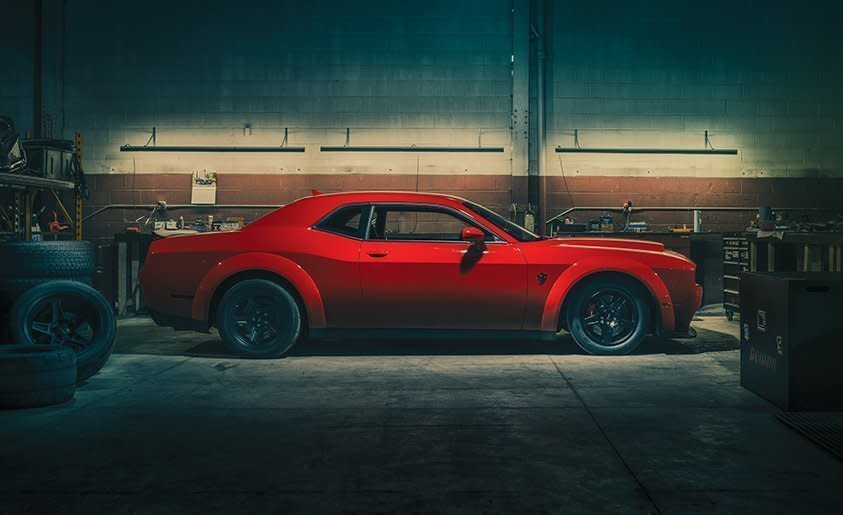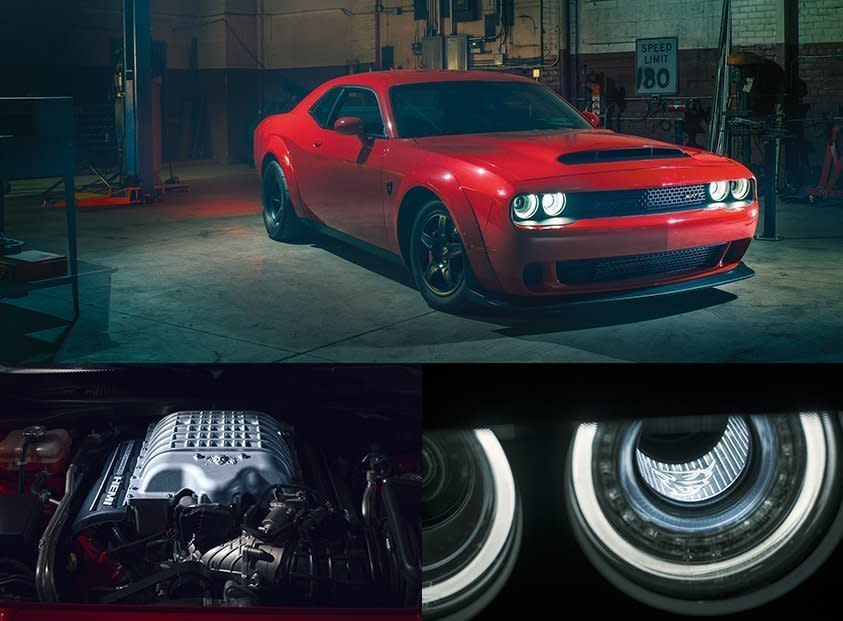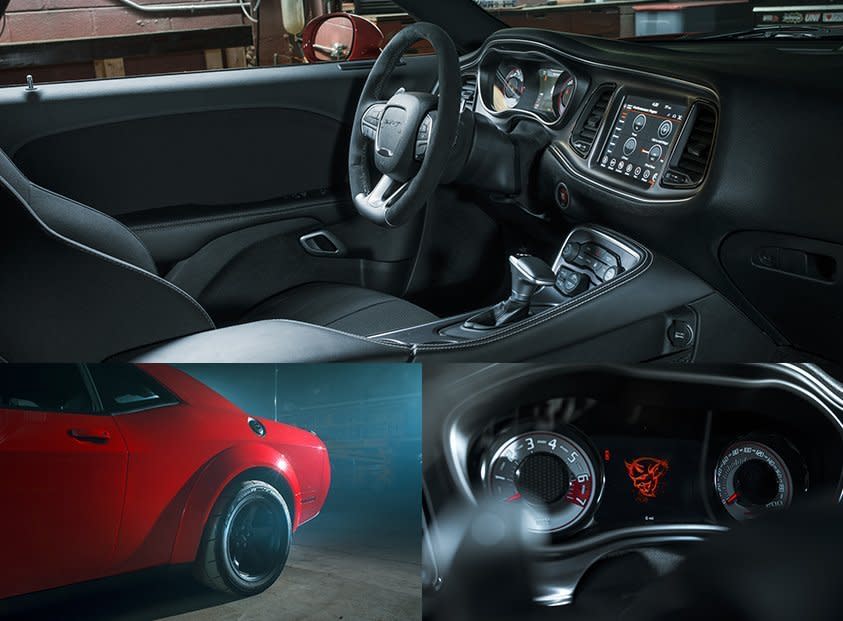Quarter Pounder: In Depth with the 2018 Dodge Challenger SRT Demon


From the June 2017 issue
One hundred fifteen. That’s the number of parts in an SRT Hellcat that Dodge changes to make a Demon. Some are made lighter, some are made stronger, and some are simply removed altogether. Compared with the total number of parts that it takes to make a running car, 115 is a small number.
So is 9.65. That’s how few seconds Dodge claims the Demon needs to run a quarter-mile, blistering the trap at 140 mph. If we can match that figure—a sizable “if,” since our testing venue better approximates grip levels on the street than the drag strip where Dodge ran its numbers—it will make the Demon the quickest street car we’ve ever tested. Period. That includes million-dollar hypercars and 1000-hp aftermarket specials. It’s also quick enough that an NHRA-sanctioned drag strip will require you to install a roll cage. Indeed, SRT boss Tim Kuniskis is proud of the letter he received from the NHRA telling him his car is banned without one.

The Demon Crate, available for $1, is packed with drag-strip goodies to truly unleash the Demon.
Downsizing the wheels from 20 inches to 18 saved another 16 pounds, as did shrinking the front brakes. Switching to hollow anti-roll bars saves 19. Smaller savings come from ditching the parking sensors and the power tilting/telescoping steering mechanisms (the adjustments are manual now). All told, the Demon is some 215 pounds lighter than a Hellcat.
Launching at 1.8 g’s requires an efficient transfer of that lightened load rearward, which means softer springs, noodlier anti-roll bars, and adjustable dampers that behave differently here than in any other car. “Every single adaptive suspension ever made has a baseline,” notes Kuniskis. “And the idea is to take it from the baseline to stiffer, stiffer, stiffer. Street, sport, track, whatever.” But, since drag racers on a budget have been known to drill holes in their front dampers to drain the fluid—facilitating quicker load transfer to the rear on launch—the SRT team tuned the adaptive dampers from the Hellcat to do the modern equivalent. At launch, the rears go full firm, and the fronts soften completely—so long as the driver keeps the throttle wide open. If the car gets squirrelly and the driver backs out of the gas, the fronts firm up to help maintain directional control as load shifts back onto the skinny front tires.
Those tires, known as “runners” in the drag-racing world, are part of a gymnastic loophole squirm Dodge had to perform to get the Demon past its own lawyers. They are not street legal, which is why, when buyers pick up their Demon from the dealership, it will ride on four identical Nitto NT05R drag radials, 315/40R-18 at each corner. The car will come with a voucher that entitles the buyer to purchase a big box called the Demon Crate from the parts department; like the seats, the Demon Crate option costs $1. In it are, among other things, a pair of 4.5-inch-wide wheels along with a jack, a Snap-on electric impact wrench, and a torque wrench so the owner can fit them to the car. Critically, though, the crate is sold separately from the car and doesn’t even come with tires. “The wheels don’t come with the car, they’re not on the car, and we don’t even give you the tires,” says Kuniskis. What lawyer could possibly object? And, while the crate is far too large to fit in the Demon, it also contains a foam carrier that nestles into the spare-tire well and has cutouts to transport all the critical bits to and from the track. So, yes, those Nittos on the front axle when the Demon grumbles out of the showroom are rear spares.


 Yahoo Autos
Yahoo Autos 